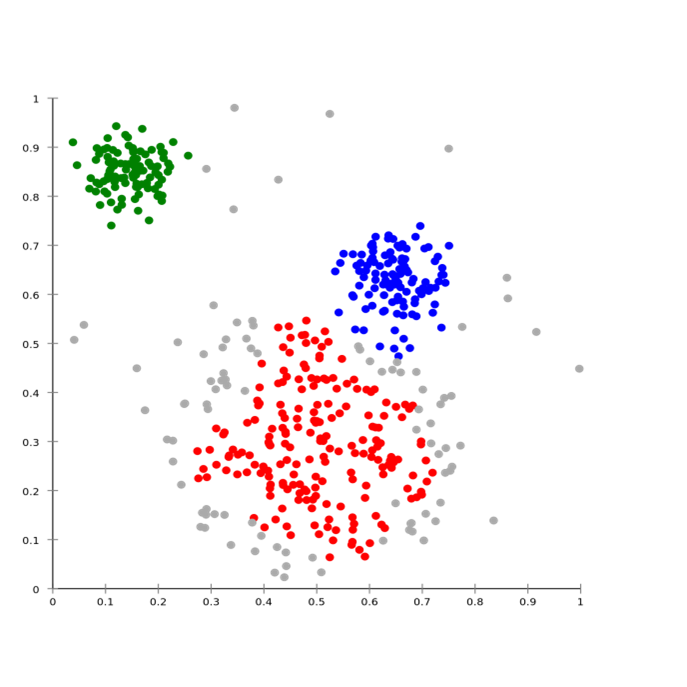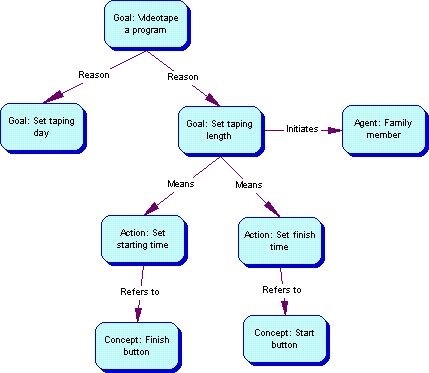Hierarchical Task Analysis
What is a hierarchical analysis?
"A hierarchy is an organization of elements that, according to prerequisite relationships, describes the path of experiences a learner must take to achieve any single behaviour that appears higher in the hierarchy" (Seels & Glasgow, 1990, p. 94). Thus, in a hierarchical analysis, the instructional designer breaks down a task from top to bottom, thereby, showing a hierarchical relationship amongst the tasks, and then the instruction is sequenced bottom up. For example, in the diagram below, task 4 has been decomposed into its enabling tasks implying that the learner cannot perform the third task until he/she has performed the first and second tasks respectively.

How do I conduct a hierarchical analysis?
The starting point for constructing a hierarchy is a comprehensive list of the tasks that make up a job or function. There are three major steps to constructing a hierarchy:
- Cluster or group the tasks. For inclusion in a group, select tasks that bear a close resemblance to each other. Each task must be included in at least one of the groups, but a task may also be common to several groups. Label the groups with terms that emerge from the job or function being analyzed. Initial clustering or grouping of tasks may be tentative. The composition of the groups may change as a result of decisions you make later on. Do not hesitate to regroup tasks when it seems appropriate.
- Organize tasks within each group to show the hierarchical relationships for learning. Ask yourself "What would the learner have to learn in order to do this task?" Once the essential prerequisite relationships are shown, reevaluate the relationship between each pair of tasks with the question "Can this superordinate task be performed if the learner cannot perform this subordinate task?" The lower-level skill must be integrally related to the higher-level skill. The learning types (domains) of the tasks should match horizontally. (See taxonomies for identifying learning domains/levels (psychomotor, intellectual, affective).
- Confer with a subject matter expert to determine the hierarchy’s accuracy. This step occurs concurrently with Steps 1 and 2.
(Seels & Glasgow, 1990)
What criteria should I use to evaluate my analysis?
The following is a checklist for you to evaluate your hierarchical analysis:
- Adequate breadth (number) of tasks; (0-5).
- Depth of levels: does hierarchy span all levels of learning (problem-solving to verbal information) leading to the final level of the task; (0-5).
- Validity & accuracy: how well does analysis correspond to learning processes; (0-5).
- Consistency in grouping similar tasks on the same level in the hierarchy; (0-5).
- All skills/sub-skills stated in performance terms (using verbs); (0-5).
Can I see an example of a hierarchical task analysis?

Click here to download the image above.
Information-processing analysis
What is an information-processing analysis?
"Conducting an information-processing analysis is the first step in 'decomposing' or breaking down a goal into its constituent parts, identifying what the students need to learn to attain the goal (Smith & Ragan, 1999, p. 69)." When conducting this type of analysis, the question to keep in mind is "what are the mental and/or physical steps that someone must go through in order to complete this learning task (Smith & Ragan, 1999, p. 69)?" One way to do this is to think through the steps one could go through to complete the task. It is helpful to use a defined procedure such as the steps listed below.
How do I conduct an information-processing analysis?
The following are ten steps to follow in conducting an information-processing analysis:
- Collect as much information as possible about the task and the content implied by the goal. Use this to become familiar with the terminology involved. Then create a set of questions that could be asked of a subject matter expert.
- Rewrite the goal in the form of a representative test question.
- Ask several individuals who know how to complete the task and do one of the following: a) observe them completing the task and ask them to talk aloud about their thought processes as they complete the task; b) observe them completing the task and write down, videotape, or otherwise record the steps; c) have the individuals record the steps in writing as they complete them or d) ask them to simply write down the steps they would use to complete the task. Techniques a) and b) give the most information because experts often forget some of the steps they go through when completing a task.
- Review the steps recorded in step 3 and ask questions about the process of completing the task. This will help you to find out the unobservable cognitive knowledge that underlies the expert's behaviour.
- If more than one expert was used, review the findings and find the common steps and decision points collected from steps 3 and 4.
- Identify the shortest, simplest way to complete the path, noting factors that require this simpler path.
- Make notes of factors that may require more steps or more complex steps.
- Choose the steps and circumstances that best match the intentions of the goal.
- Make a list of the steps and decision points appropriate for the goal.
- Confirm the analysis with other experts. (Smith & Ragan, 1999)
Can I see an example of an information-processing analysis?
Information-Processing Analysis for a Concept

Click here to download the image above.
Cluster analysis
What is a cluster analysis?
"For goals within the verbal information domain, conduct an 'elaboration analysis,' or 'cluster analysis'" (Oliver, 2002, section 3, para. 3). A cluster analysis is used to analyze verbal information skills where no logical order is required to meet the stated goal(s) (Muffoletto, 2000).
How do I conduct a cluster analysis?
Before conducting a cluster analysis, an instructional designer needs to first ask if there is a logical order to the steps needed to meet the goal. After determining there is no logical order needed to meet the goal, the next step for the designer is to identify the clusters or categories of information in each step. Oliver (2002) suggests the following procedure when analyzing goals within the verbal information domain.
- Identify the main concept.
- Determine how the knowledge is structured (e.g., parts, kinds, classes).
- Identify first-level headings, second-level headings, and so forth.
- Try to identify what is related to the information being taught.
Can I see an example of a cluster analysis?
Please see the graph below:

Click here to download the image above.
Conceptual graph analysis
What is a conceptual graph analysis?
Constructing a conceptual graph is similar to concept mapping, but it includes a formal and detailed collection of nodes, relations, and questions. The nodes can include more than just concepts. Nodes can be goals, actions, or events. There are specific relations for each type of node, and a set of formal, probing questions is developed for each node type. Basically, conceptual graph analysis has two stages. The first stage consists of the task analyst or expert creating a basic conceptual graph. The second stage consists of the analyst or expert using probing questions to find a deeper layer of information for the graph. The analyst or expert may opt to include a third stage of validating the conceptual graph by having an expert perform the task to check for missing information (Jonassen, Tessmer, & Hannum, 1999).
How do I conduct a conceptual graph analysis?
The following are six steps to follow in conducting a conceptual graph analysis:
- Clarify the uses for the graph information.
- Choose a set of situations for the expert to analyze.
- Construct a rough graph.
- Prepare a list of follow-up questions.
- Expand the graph.
- Review the final graph. (Jonassen, Tessmer, & Hannum, 1999, p.202-203)
Can I see an example of a conceptual graph analysis?
Excerpt of a conceptual graph on operating a video recorder:

Click here to download the image above.
Chapter Highlights
- Types of needs analyses.
- Knowledge, skills, abilities.
- Techniques.
- Checklist for evaluating an assessment.